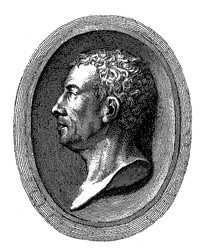Das Bild zeigt eine Kraterlandschaft im Vordergrund. Die Krater muten wie Baumstümpfe an. Im Hintergrund erstreckt sich eine Wüste.
Über den Kratern ist Ikarus in Grün zu sehen, die Flügel sind blutig rot und in Auflösung begriffen. Ikarus wird durch seinen Kopf und Torso durch eine lange, dünne Nadel durchstochen, die im vordersten Krater endet. Der braune Nadelkopf ist am oberen Bildrand zu sehen. Rechts neben Ikarus ist ein undefinierter, dämonischer Tierschädel auf eine weitere Nadel aufgespießt. Diese sticht spiegelverkehrt zur anderen Nadel herab und trifft vor dem ersten Krater auf dem Boden auf. Der Nadelkopf ist klein und schwarz, auf ihm sitzt ein kleiner Vogel.
Sig./dat.: r.u. Harald Lange 1980
Bez.:
en

